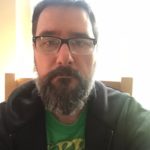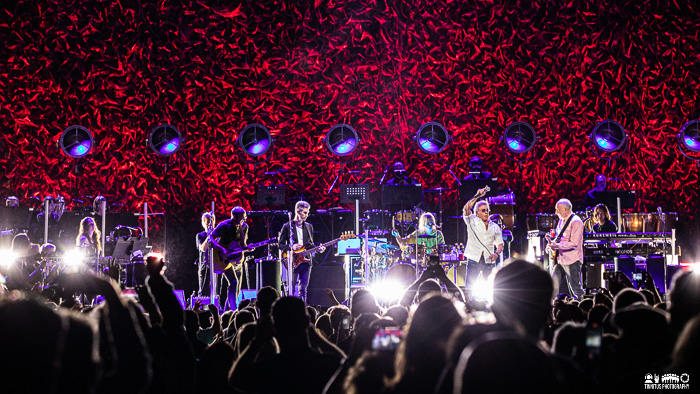
Maybe purists will correct you when you claim that Tommy was the first rock opera and they start spewing about SF Sorrow instead but let’s not quibble about such trivia. And you know what goes well with operas? Old-timey instruments like violins, cellos, brass and woodwinds. The mating of a rock band with a full orchestra isn’t a new concept, but for a band like The Who it makes a lot of sense, at least for a portion of their discography.
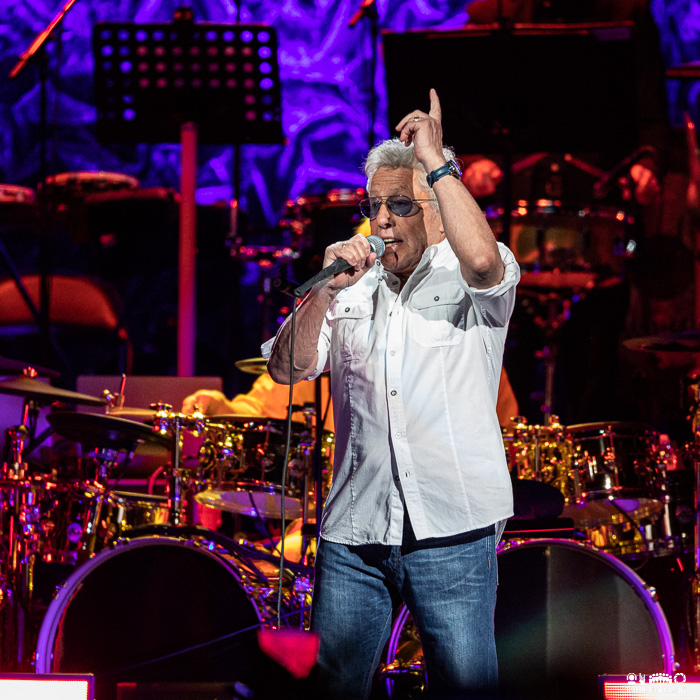
The last time The Who hit town they did the same format as the 2019 Fenway Park show, and there was a lot of set list overlap between that show and this one. Why not? The material was road-tested, and between Tommy and Quadrophenia, a lot of the songs lend themselves particularly well towards the emotional tides of a full-on symphony orchestra. Of course, they pretty much stayed away from their early R&B roots and Daltrey didn’t have to sing that line which by now would a bit uncomfortable because let’s face it – they are old. Townshend would turn 77 the following day!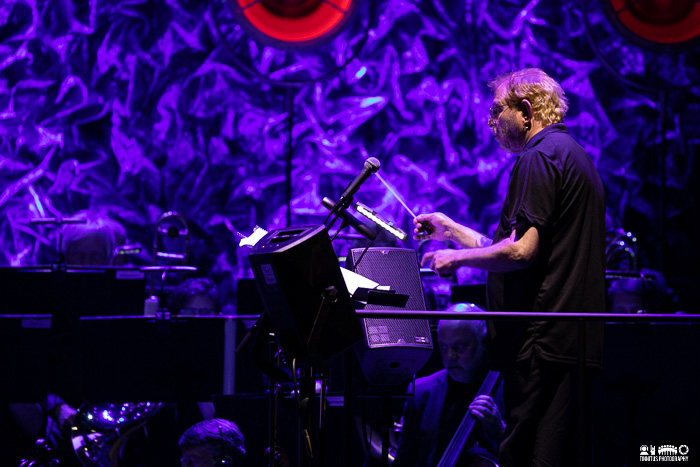
The first set was heavy on the early songs of Tommy and the melody line of the brass (first played by John Entwistle on French Horn) gave way to the thunderous tympani crashes, the orchestra conducted by Keith Levenson really bringing a strong sense of dynamics to the song. You could make an observation that it takes a handful of percussionists to fill the role of the departed Keith Moon, but Zak Starkey (Ringo’s kid) has been manning the drum seat for a while now and is a strong and precise drummer who keeps the song between the lines rather than Moon’s tendency to sometimes end up in the median strip.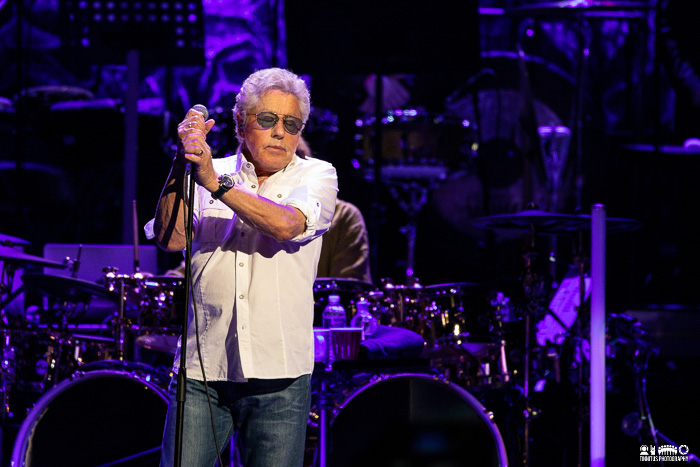
Daltrey had some well-publicized throat issues and while he sometimes dropped down an octave or otherwise made some on the fly adjustments, his voice sounded good overall, especially for one who was much more of a shouter than singer for decades. Townshend was a bit of a mystery, sometimes looking like he was dialing it and letting younger sibling Simon do some of the guitar heavy lifting but then again he deftly finger-picked his way through “You Better You Bet” and looked pretty invigorated playing the 7″ only release of “Relay.” Before the plaintive “Behind Blue Eyes,” Roger introduced and gave center stage to lead violinist Katie Jacoby and cellist Audrey Snyder, whom he referred to as a celloist and then Pete promptly informed him that the correct term was celloizer before they played key roles in the playing of that classic rock chestnut from Who’s Next.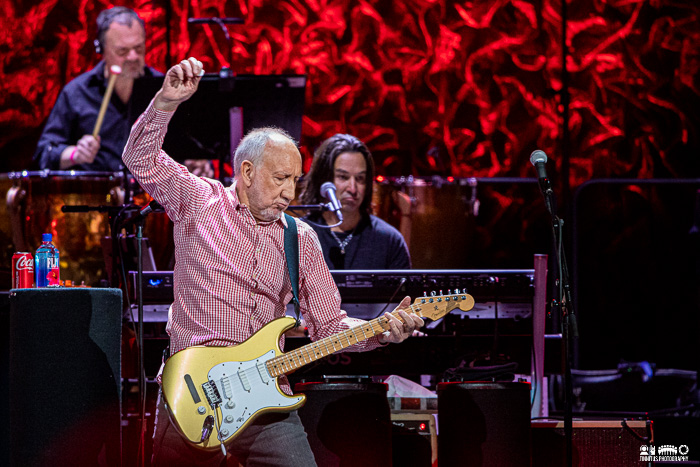
The last third of the set was heavy on the Quadrophenia material, for my money the strongest record they ever did. “Out of my brain on the train!” Pete’s paean to dropping pills while on the Underground is as timeless a song as they got, and Roger was playing goofing around near Pete’s windmilling and coaxed a grin from him. On this and a couple of others he stuck in some non-studio stuff, uncharacteristically jamming out rather than sticking to the script. I guess if you play a song enough times over 50-plus years you get a little bored with it.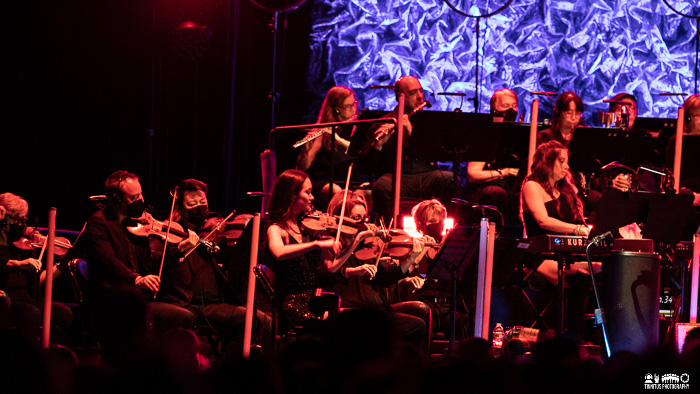
Things got a little weird by the time the epic instrumental “The Rock” was played; the orchestra was a key element to the surging maelstrom but the video screens were filled with tragically historical moments from the 20th century; war, strife, assassinations, etc. To have it capped with a montage of images featuring the late John Entwistle was I’m sure meant to be an homage but instead came off as weirdly incongruous. The end of the set (not counting the impromptu rendition of “Happy Birthday” that Roger led for Pete) was undeniable; “Baba O’Riley” is an undisputed rock anthem, and arms and fists were in the air for the duration, including Jacoby’s hoedown on violin that brings it to a climactic end. Well done, Roger and Pete; you might be down The Two but you still have an amazing back catalog and play to a house of adoring fans.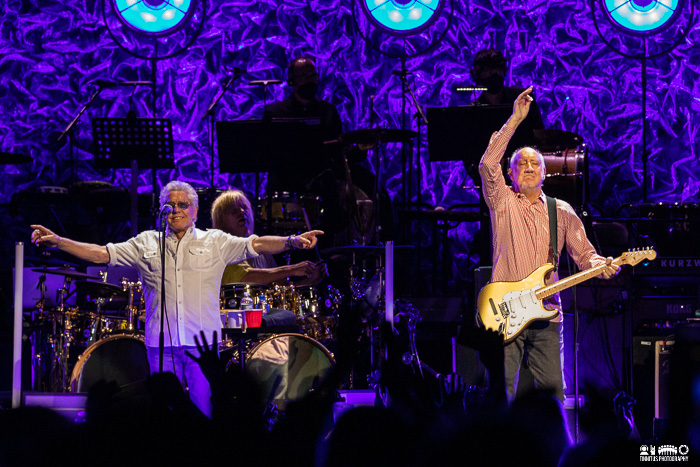
When you open for The Who, there’s a lot expected but the better gambit is to not play the same strategy. Amethyst Kiah understood this, and she and her three piece band played a smoky shade of Americana/blues that hinted at some of The Who’s earliest influences but updated the sound. A veteran of Newport Folk, she joined Alison Russell and Rhiannon Giddens as a contributor to the Songs Of Our Native Daughters project but tonight’s set (or at least the bit I was able to see) was heavily slanted in the blues vs folk direction.
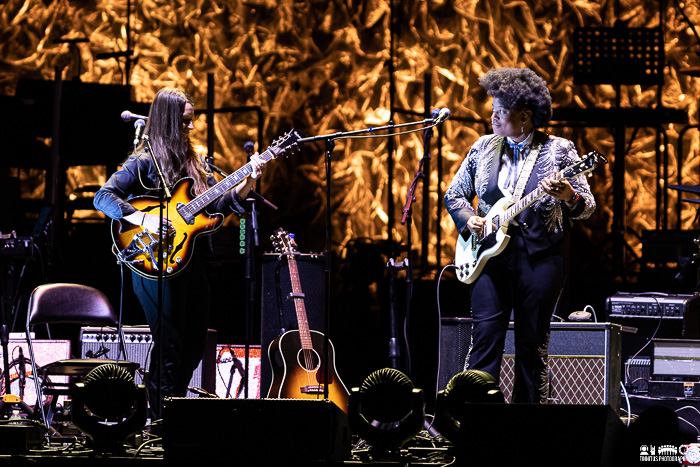
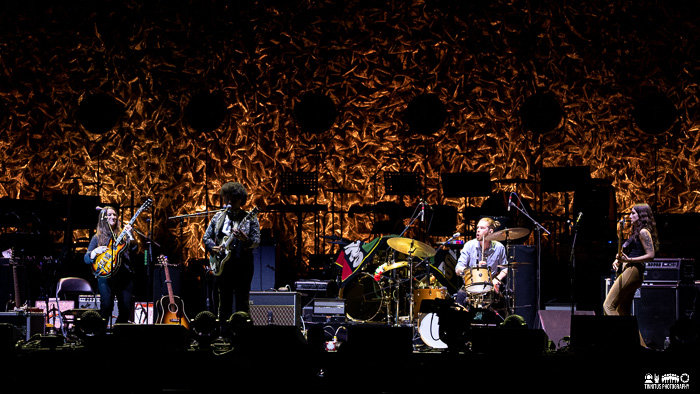
Primarily based in Boston, Massachusetts, Tim Bugbee is no stranger to traveling throughout the country or overseas to capture the best live music photos.
